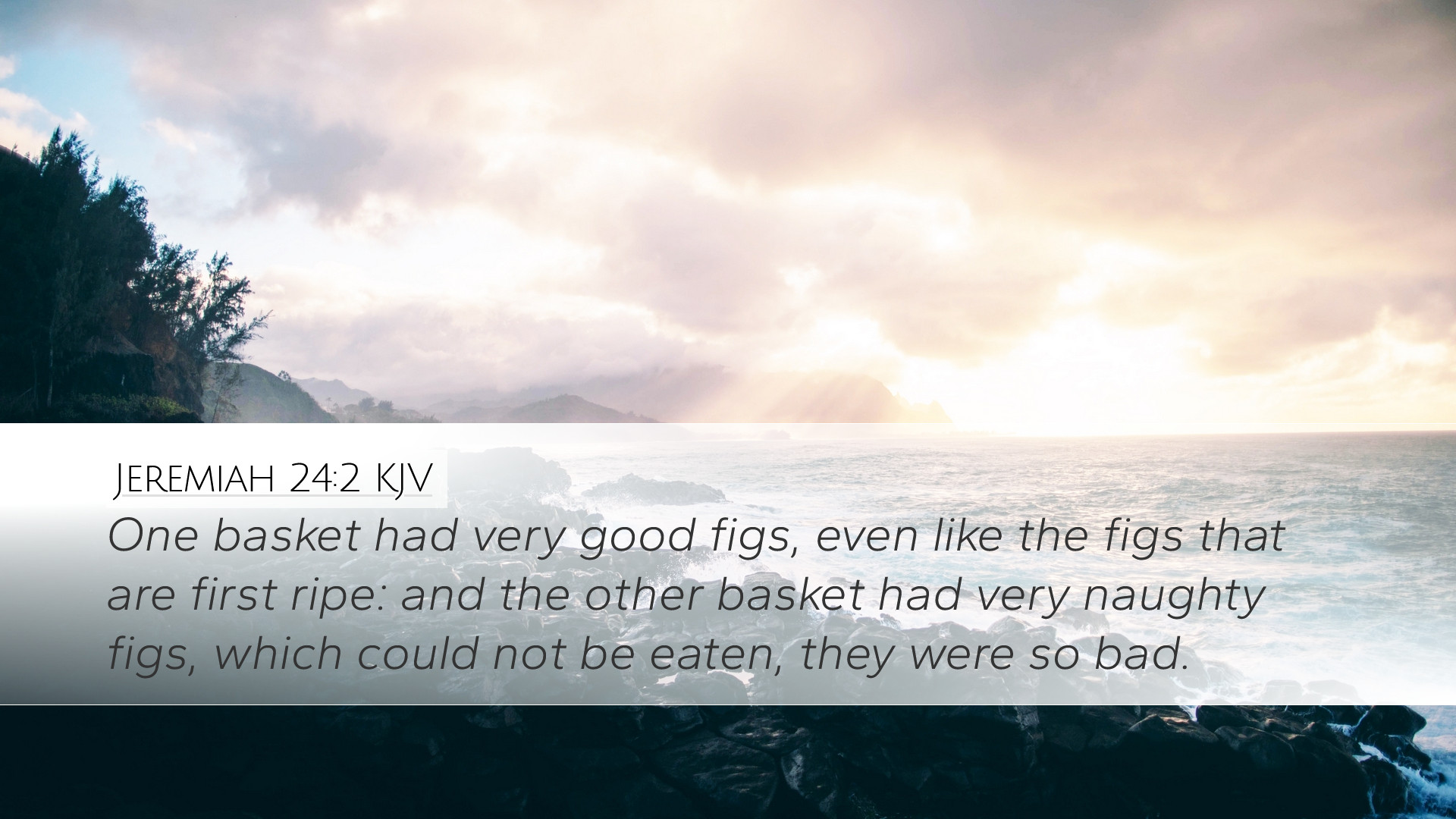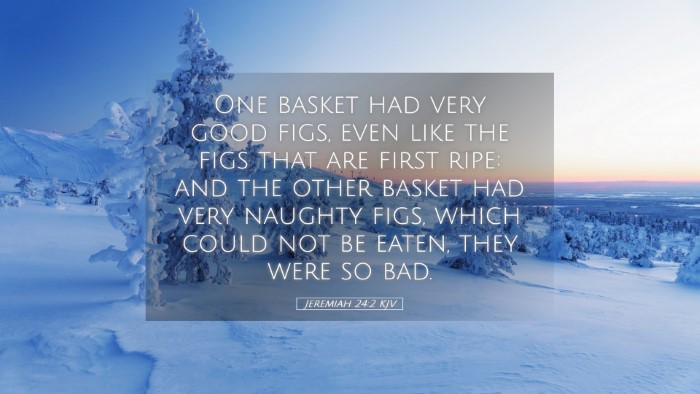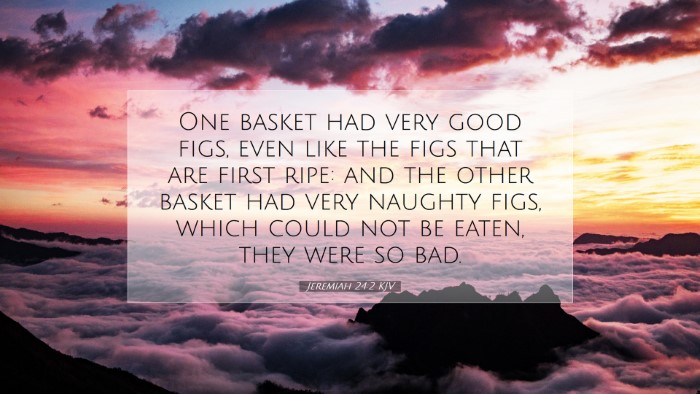Commentary on Jeremiah 24:2
Jeremiah 24:2 states: "Then the Lord showed me two baskets of figs set before the temple of the Lord, after Nebuchadnezzar king of Babylon had carried away captive Jeconiah the son of Jehoiakim, king of Judah, and the princes of Judah, with the craftsmen and smiths from Jerusalem and had brought them to Babylon." This verse introduces a significant vision that the prophet Jeremiah received from the Lord, which serves as a metaphorical illustration of God's judgment and mercy.
Contextual Background
To fully understand Jeremiah 24:2, it’s essential to consider the historical and theological context. This passage occurs during a period of severe turmoil for the Jewish people, particularly following the Babylonian exile in 586 B.C. The king Jeconiah had been taken captive along with others, and Jerusalem was facing the consequences of its disobedience to God.
Symbolism of the Baskets of Figs
The two baskets of figs symbolize two groups of people who were affected by the exile. According to Matthew Henry, these baskets represent the two distinct destinies awaiting the people of Judah: those who would be preserved and those who would face destruction. Henry notes that one basket contained good figs, which represented those who would return to their homeland and be restored, while the other contained bad figs, symbolizing those who would face ruin.
The Good Figs
- Sign of Restoration: The good figs signify God's promise of restoration to the exiles. Albert Barnes emphasizes that these figs represent the remnant of Judah, those who remained faithful and would eventually return to Jerusalem. This reflects God's mercy and His intent to rejuvenate His people.
- Spiritual Revival: Adam Clarke comments on the spiritual revival that would accompany the return. The good figs symbolize not just physical restoration but also a revival of faith and commitment to God’s covenant.
The Bad Figs
- Judgment and Destruction: The bad figs signify those who would not repent and thus fall under God's judgment. Matthew Henry explains that these are the obstinate ones, who continue in their rebellion against God. They will face spiritual and physical destruction, highlighting the consequences of sin.
- Symbol of Warning: Barnes indicates that the bad figs serve as a warning to those who reside in Babylon, emphasizing their dire spiritual state and the certainty of their fate. This reflects God's justice as well as His foreknowledge of the hearts of His people.
Theological Implications
This verse illustrates several key theological themes:
- Divine Sovereignty: The vision underscores God's control over historical events. Clarke notes that even in captivity, God is ultimately in charge and knows the outcome of His people. He orchestrates events for His purposes.
- The Nature of God's Mercy and Judgment: The distinction between the good and bad figs represents God's dual nature of mercy and judgment. While He punishes sin, He also extends grace to those who return to Him.
- Hope for the Future: The promise of restoration contained in this vision offers hope to the exiles. Henry argues that this future hope is central to Jeremiah's message, reinforcing the concept of a faithful remnant that God preserves.
Pastoral Applications
For pastors and theologians, Jeremiah 24:2 provides rich material for application:
- Encouragement in Trials: This passage can be used to encourage congregations facing difficulties, emphasizing that God can bring about restoration and hope even in the darkest of circumstances.
- Call to Repentance: The distinction between good and bad figs serves as a powerful reminder of the necessity for repentance. Pastors can use this to encourage self-examination and a return to faithfulness.
- Proclamation of God's Sovereignty: In uncertain times, the reminder of God's sovereignty can be comforting. Pastors can preach about the assurance that God is aware of our situations and is working sovereignly for our good.
Conclusion
In conclusion, Jeremiah 24:2 conveys profound insights into God's character and His relationship with His people. The metaphor of the two baskets of figs serves not only as a historical account but also as a theological foundation for understanding God's mercy and judgment. As scholars and students engage with this text, they will find that it challenges and encourages believers to recognize the importance of faithfulness in all circumstances and to trust in God's ultimate plan for restoration.


